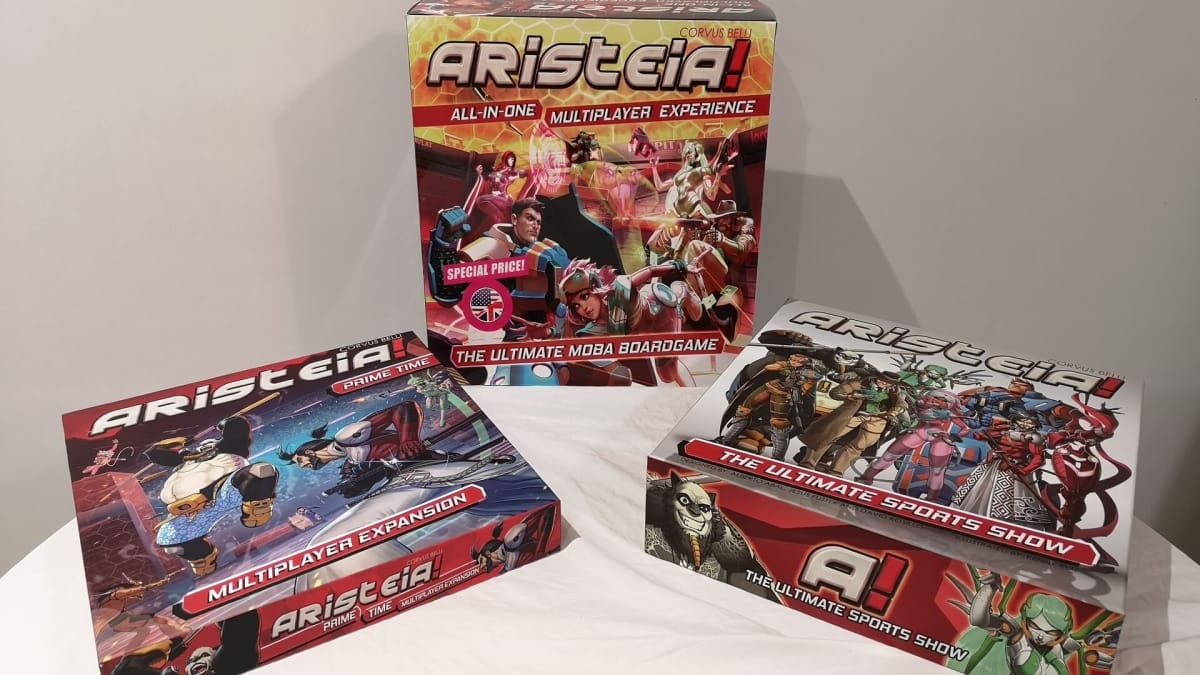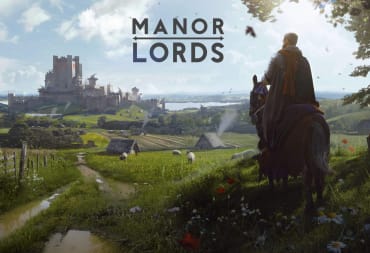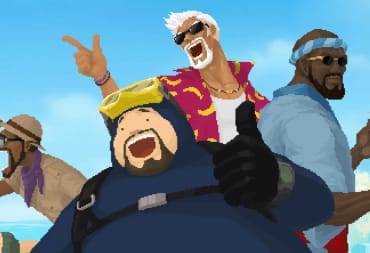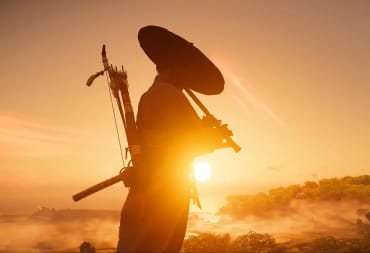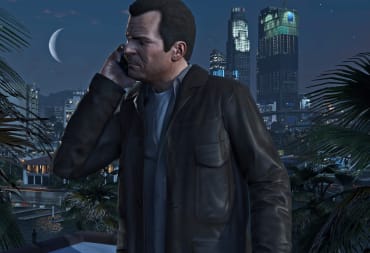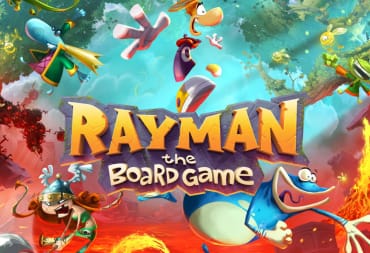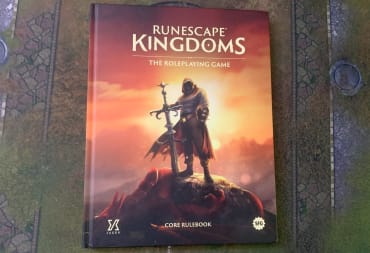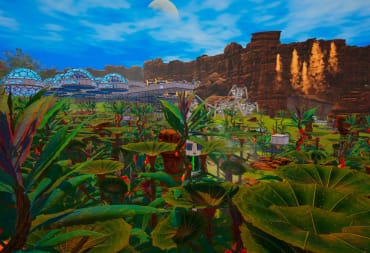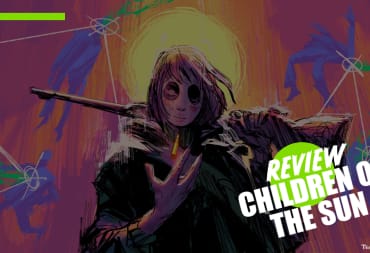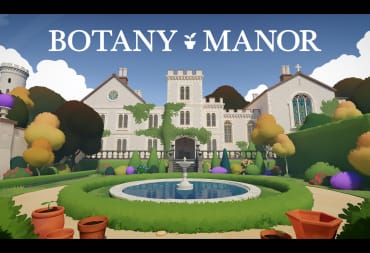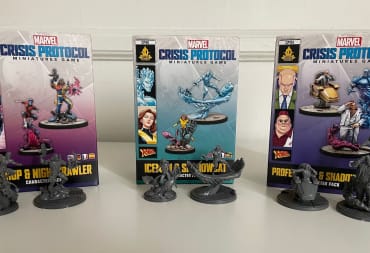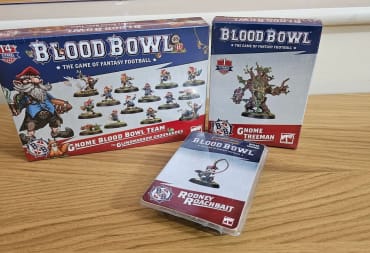Aristeia is a competitive MOBA style board game set in Corvus Belli's Infinity universe. Aristeia is an armed combat sport within the world of Infinity, where technology has moved to such a high level that it allows near immortality for its contestants, who can respawn after being defeated during the match. The game itself is a team sport where players select 4 warriors for their group and go head-to-head against their opponent's team to complete objectives, like capturing scoring zones. Aristeia also recently received a multiplayer expansion pack, Aristeia Prime Time which upgrades the core set for 3 or 4 player matches. In this article, we'll first review the Aristeia core set and then look at Aristeia Prime Time and what it adds to the game.

You can buy all the Aristeia products from our tabletop sponsor, Firestorm Games.
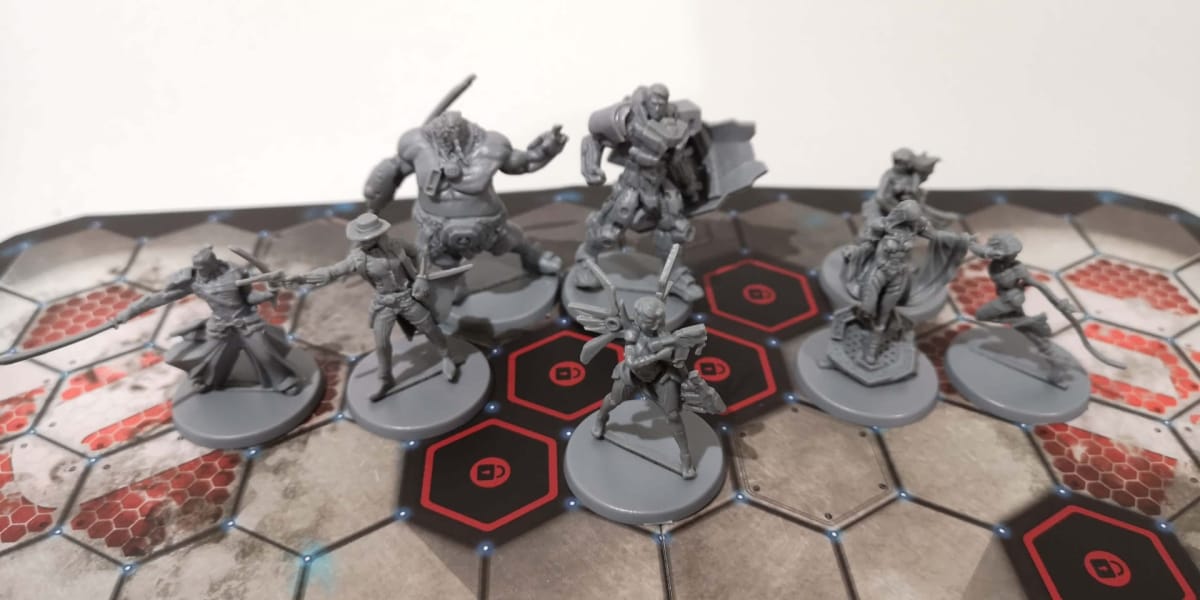
Aristia Core Set
The Aristeia Core Set contains 8 characters (4 for each team):
- Maximus - Tank
- Major Lunah - Long-Range
- Miyamoto Mushashi - Short-Range
- Gata - Runner
- hEXx3r - Board controller
- Wild Bill - Mid-Range
- Parvati - Medic
- 8-Ball - Tank and control
All the characters are considered balanced in-game, so after playing the beginners game with dictated characters, players can select any 4 characters as their team (teams cannot contain more than 1 copy of each character, but rival teams can contain the same character) or run a draft format picking warriors from pool. After selecting characters, players put together their decks, which contain 10 standard cards (these are always the same for both players), and then add their characters cards. Each character has 4 cards available and players select 2 cards from each of their character's 4 cards, adding them to the standard cards to create an 18 card deck. During the game, these cards are finite and are drawn over the course of the game, however, once they've all been used, you don't get any more.
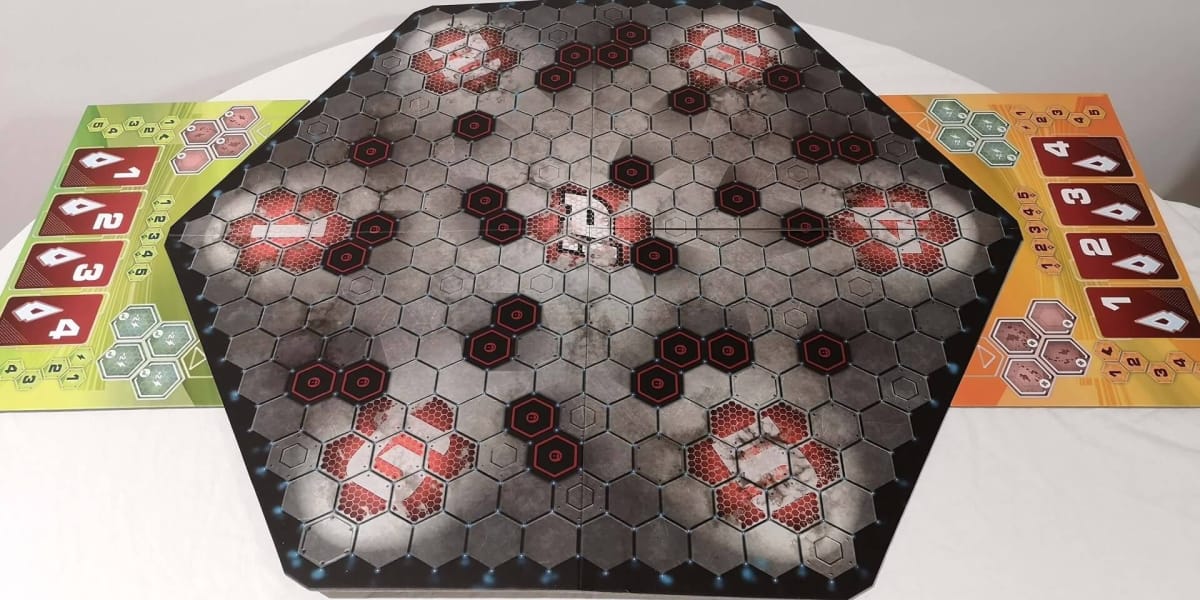
The game itself takes place in the HexaDome, a double-sided hexagonal playing board dived into hexagon spaces that are used for movement and range.
Depending on the scenario being played, players deploy their characters into the selected numbered areas on the board and then take turns trying to take out enemy characters and complete objectives which usually involves having more characters than your opponent in scoring zones which can change each turn. For example, Scorched Earth has a scoring zone that changes each round, but after a scoring zone has been scored, it can't be selected again as a scoring zone for the duration of the match, but during the Assault scenario, the players decide each turn which numbered area is the scoring zone and the only restriction is that it can't contain a character when selected.
At the start of each round, players decide what order their characters are going to activate in and place their initiative cards on their Control Panels in the order they wish to activate them. Players reveal their selected initiative card simultaneously and the character with the highest initiative goes first. In early rounds this doesn't have a huge effect beyond being able to activate first as characters aren't able to remove a character with a single hit (unless you throw a load of boosts in and roll extremely well), however, in later rounds, this becomes a huge piece of the tactical puzzle as being able to position and use abilities to affect your opponent's characters are usually the key to winning objectives or not.
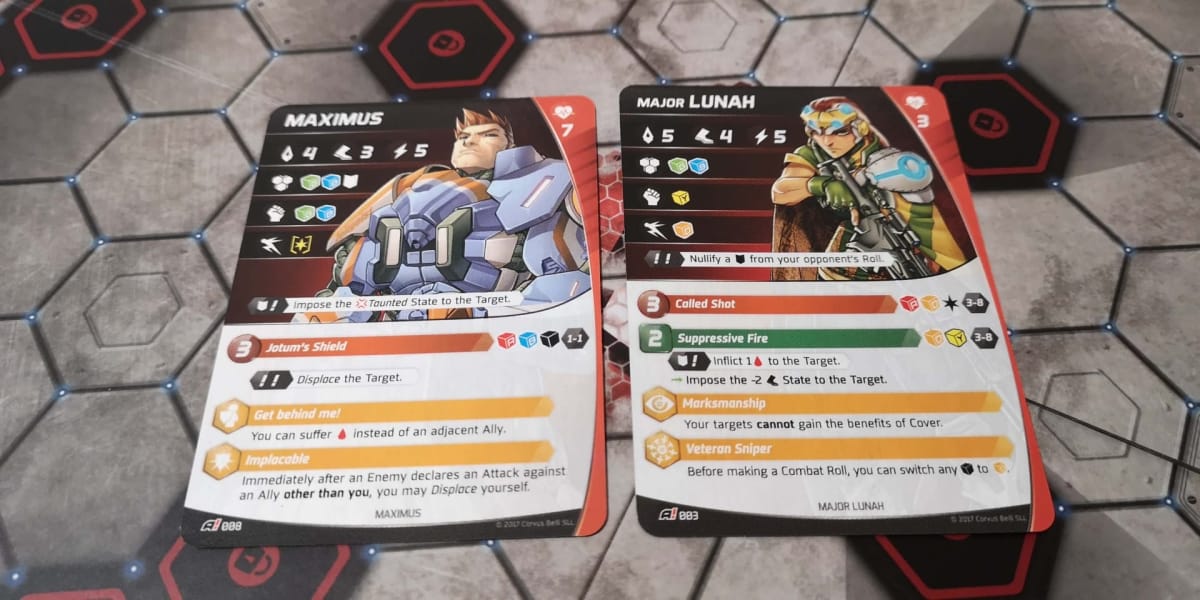
During a round, when a character activates, it gets an energy amount dictated by its card. Energy is used to pay for abilities, movement, or attacks. Movement costs 2 energy points and gives a character movement equal to the value on their character card, which is different for all characters. Maximus for example is a slow-moving tank, so only gets 3 movement, whereas Gata is a fast-moving blur with no attacks, and has 5 movement. Characters can pay 2 energy for their movement value as many times as they wish and can use their movement points freely throughout the round, even around other actions.
Characters have specific actions, attacks, and abilities they can complete throughout their turn, and these are all listed on their character's card. Attacks are listed in red with their energy cost, abilities are listed in green and passive abilities are orange and are available for players to use any time. Characters also have access to Switches, which are abilities available to them if they roll certain symbols during their turn. For example, Major Lunah the long-range attack character can use (!!) to nullify a shield rolled by the opponent, which means that more of her attacks will go through. When characters are attacked, they use their defense stat which lists which dice are rolled. Some characters have low defense, so range positioning is key to protecting less durable characters.
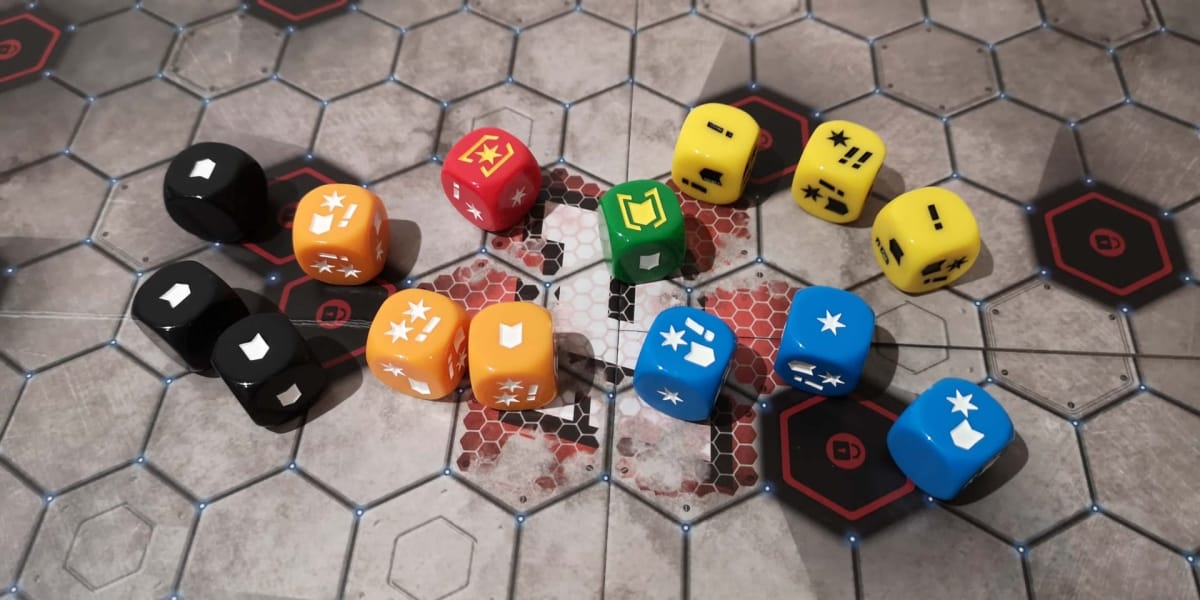
If characters are defeated, they are taken off the board and placed in the Infirmary, only being brought back into the game in subsequent rounds. Having one less character on the board is a huge restriction and really impacts a player's ability to take objectives.
Character's cards list what color and how many dice to use during an attack or action and they contain various symbols. Stars are hits done to your opponent for a single damage, shields cancel out stars, exclamation marks are usually used to activate switches, which are listed on the characters card. The red and green dice also contains a critical block and critical success. The critical success can only be canceled out by a critical block, which can be used to cancel out the entire result from an opponent's dice.
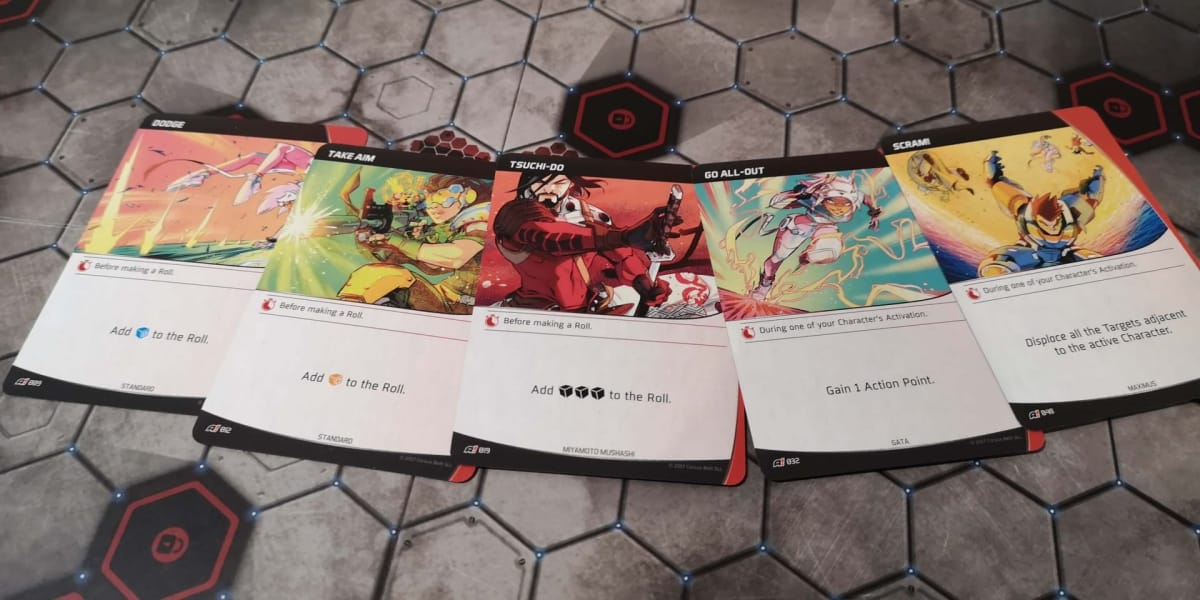
Games of Aristeia are entirely dictated by the team you select, the cards each character has available can influence the game depending on when you draw them, but in an 18 card deck, it doesn't have the same random factor that a CCG does. This does make Aristeia quite a tactical game as the random factor is entirely based on your dice rolls and places a high reliance on how you use your characters and understanding and making the best use of their game role.
There are quite a few cards and counters used throughout the game, but as they are all placed in and around the character cards and the control panels, it never feels cluttered. Games do feel fast-paced and some great combos can be put together between your selection of characters, and exploring team combinations is a big part of the fun. With just the 8 characters out of the box, there is plenty to explore in terms of team combinations and players will soon find their favorite characters.
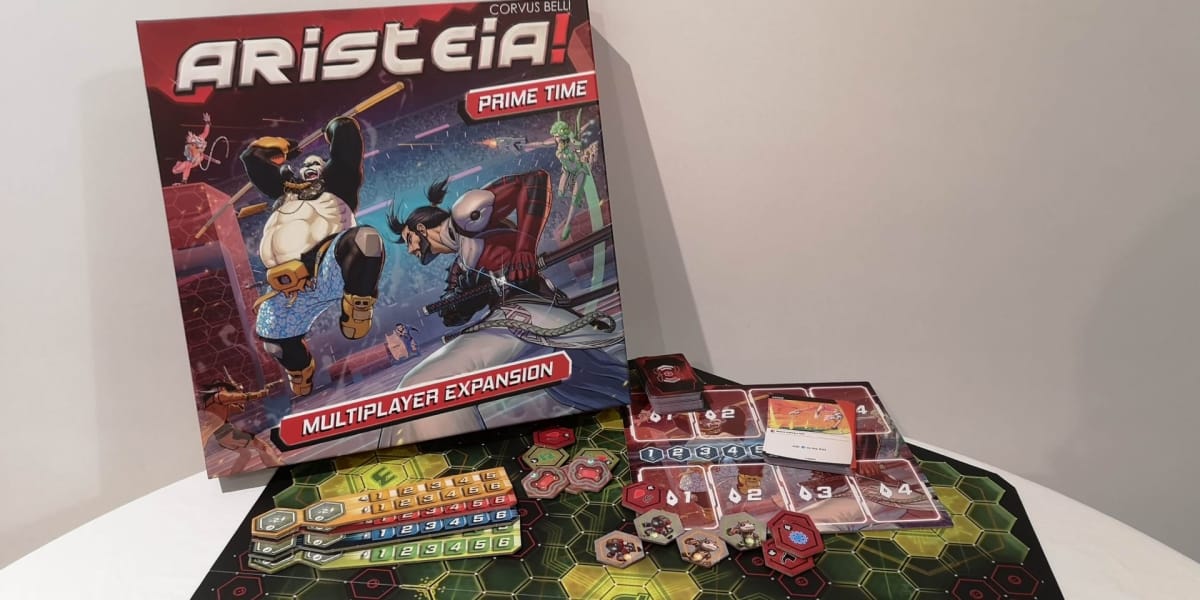
Aristeia Prime Time
Aristeia Prime Time is a multiplayer Expansion for Aristeia. Aristeia originally lets 2 players go head to head in a 4v4 match. Prime Time has all the components to let 3 or 4 players play in a 2v2v2 or 2v2v2v2. Prime Time is a purely component-based expansion, it doesn't contain any additional fighters, so if you don't need access to multiplayer games, you won't need to pick it up. It's a great decision as it doesn't force players to buy it just to get access to fighters, which are available in expansion packs and we'll cover in a later article.
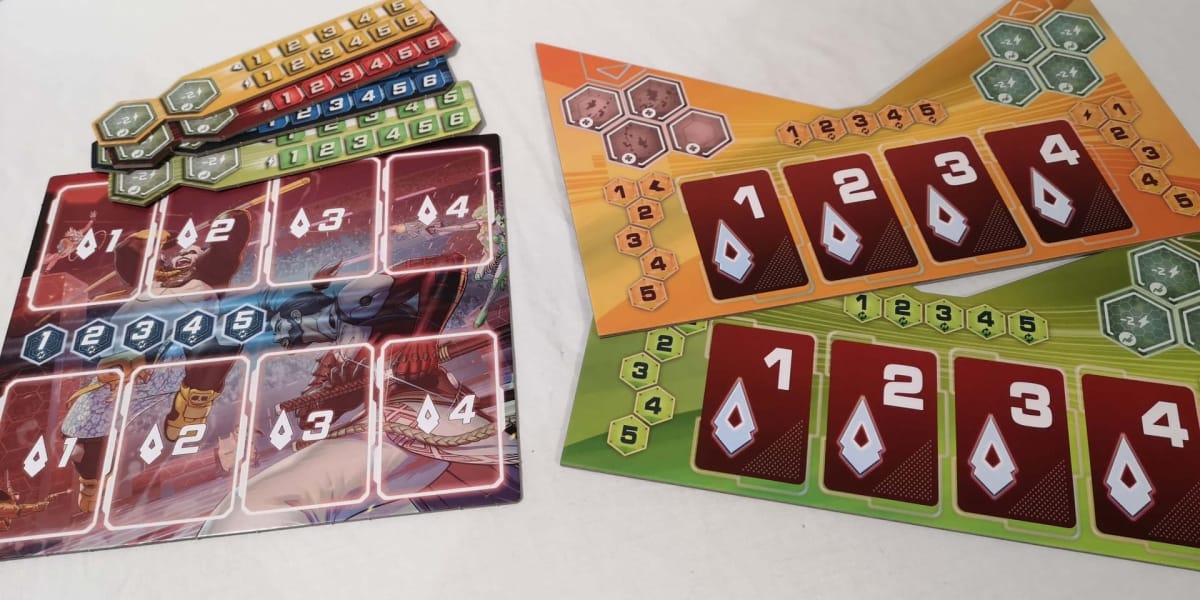
Aside from using fewer characters, the main change with Prime Time is smaller control pannels and a running order panel rather than the 2 large control panels from the Core Set. There are also additional scenarios and new HexaDome boards that caters to multipayer games better.
The Infirmary isn't used in Prime Time, which means that whenever you need to activate a character that's been taken out, they repsawn. This makes games even more fast-paced and frantic than 2 player games, as characters are constantly reappearing and battling over objectives. There are also new objective cards, which are drafted and kept secret. These can be scored at any time during play to add an extra layer of play to games.
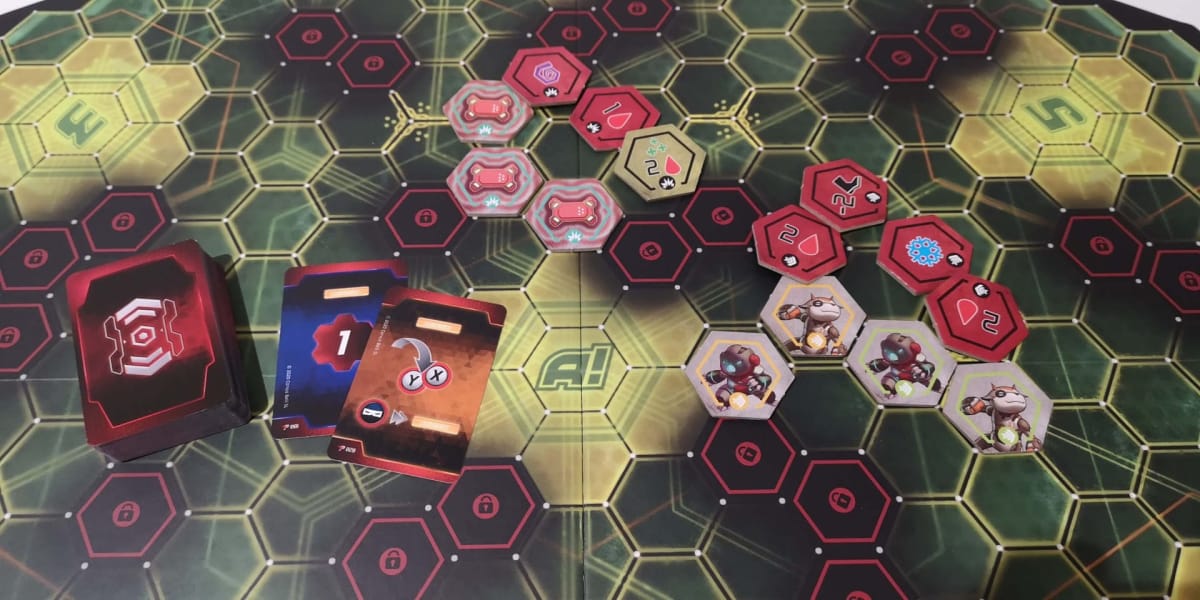
Also included in Prime Time are Special Space tokens and Running Projectile tokens. These can add an extra dimension to games and can be used in 2 player or multiplayer games. Special Space tokens can give a bonus or penalty to any character who lands on their square. Their effects range from healing, extra movement, or being stunned or set on fire. The Running Projectile tokens are MadTraps and CrazyKoalas. These are activated by the players at the end of each turn and can damage or immobilize nearby characters. Miniatures are available for both of these Running Projectiles from the Infinity range and can be used instead, drawing randomly from a cup/bag of tokens to decide the outcome rather than flipping the token.
Aristeia Prime Time is a lot of fun, with games being frantic. The smaller team sizes make it feel very punchy. There are some great combinations of pairings, which gives a fresh feel to the game for veteran Aristeia players. More thought does have to be taken with initiative and when to jump on objectives, because there are potentially 6 other characters to take a shot at removing yours after you've had your turn.
The Bottom Line:
Aristeia is a fantastic game. Team selection and knowing how to use the characters to the best effect has a huge impact on the game and is incredibly rewarding when you get it right. Games are fast-paced and the rules are easy to learn and extremely straight-forward in terms of effect and action timing. The custom dice make working out results easy and the card decks add a random element to the game, but don't have a huge impact, which keeps the tactical element balanced. The components are of solid quality and everything is quite compact and organized during play due to the Control Panels. The custom dice, straight-forward rules, and hexes for movement make this a great entry game.
Prime Time adds a solid new dimension in 3 and 4 player games. Multiplayer games are much more frantic than 2 players but no less enjoyable. The Special Space Tokens and Running Projectiles do add randomness that keeps games interesting but can have an effect on balance. The multiplayer components mean that while there are more players, it doesn't take up much more space than 2-player games, and everything feels as tight and tidy as they always did.
Aristeia and Prime Time are available separately or in a combined All-In-One bundle.
Get this game if:
- You want a fast-paced competitive game.
- You like your competitive games with minimal randomness.
- You want a straight-forward easy to learn game based in the Infinity setting.
- You want a great MOBA style board game.
Avoid this game if:
- You don't like MOBA style team selection.
- You don't like games with dice and card randomness together.
The copy of Aristeia and Prime Time used for this review was provided by Corvus Belli.
Review Summary
Have a tip, or want to point out something we missed? Leave a Comment or e-mail us at tips@techraptor.net
